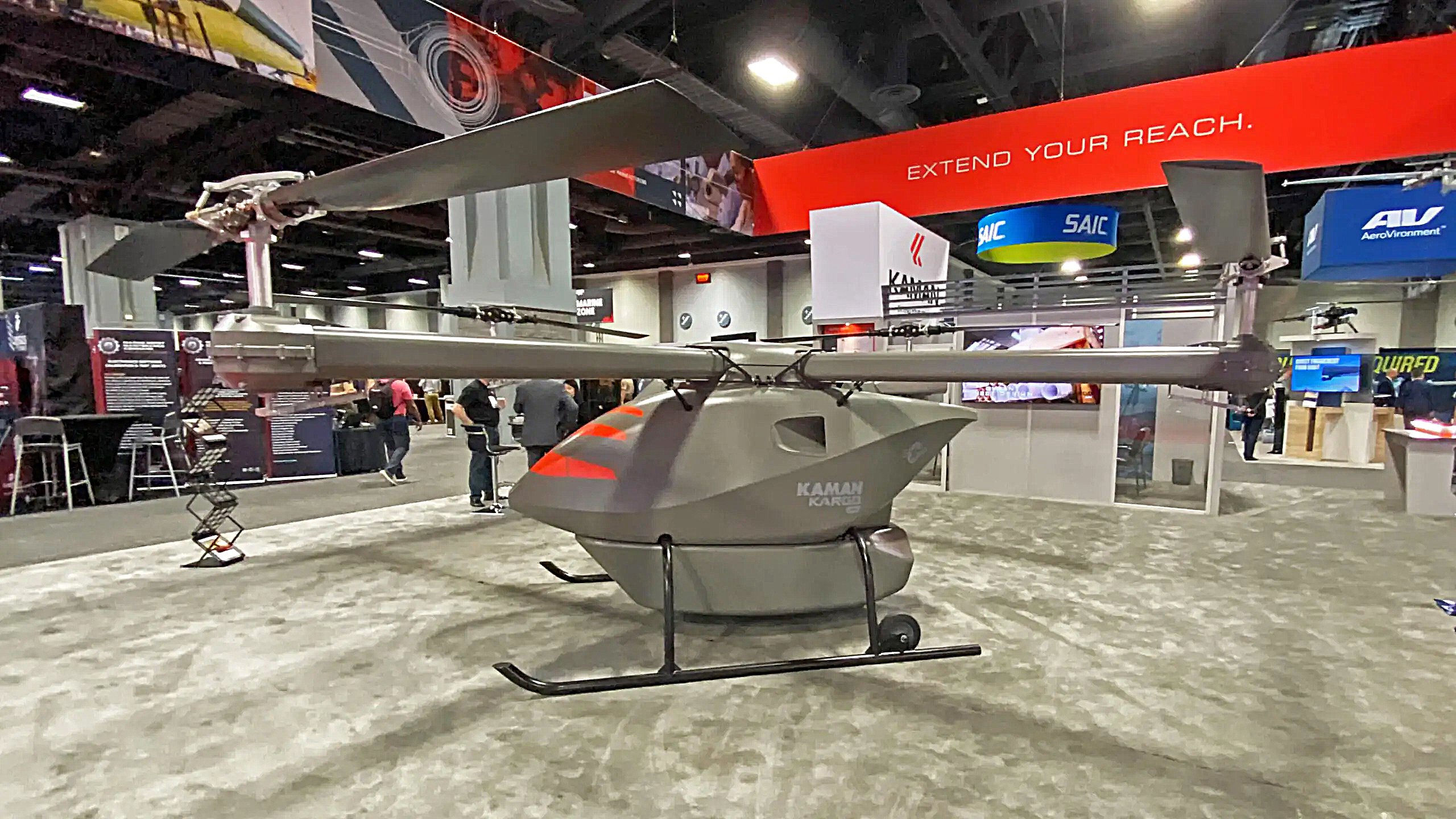The Kaman Corporation has announced the first flight of its Kargo UAV, a rotary-wing drone intended for autonomous, expeditionary resupply. The design is aimed at the U.S. Marine Corps, for which Kaman previously developed an optionally crewed version of its K-Max helicopter. The Kargo UAV is now competing in the Marines’ Medium Autonomous Resupply Vehicle — Expeditionary Logistics (MARV-EL) program, with a winner due to be selected this summer.
Although announced today at the Modern Day Marine exhibition, which TWZ is attending, the Kargo UAV took to the air for the first time in December 2023. Romin Dasmalchi, general manager of the program, confirmed that the prototype had completed most of its hover tests by mid-April and was about to begin forward flight tests, Vertical reported.

“Kargo UAV is intended to support the U.S. military, partners, allies, and commercial customers by providing affordable, reliable, and maintainable logistics support in austere and maritime environments,” Kaman said today in a press release. “The design leverages existing high-TRL [technology readiness level] components so that a suitable system could be deployed as soon as 2026.”
In aiming for that goal, Kaman is working with several other companies. In particular, it has partnered with Near Earth Autonomy for the autonomy system for the drone. The two companies previously collaborated on the K-Max, a helicopter that can operate with or without a pilot and which was tested by the Marines for delivering cargo in Afghanistan.
Kaman already flew a subscale demonstrator of the Kargo UAV in the fall of 2021. In October 2022 it was announced that the company had been selected to build a prototype for what was then known as the Medium Unmanned Logistics Systems — Air (MULS-A) program, now MARV-EL.
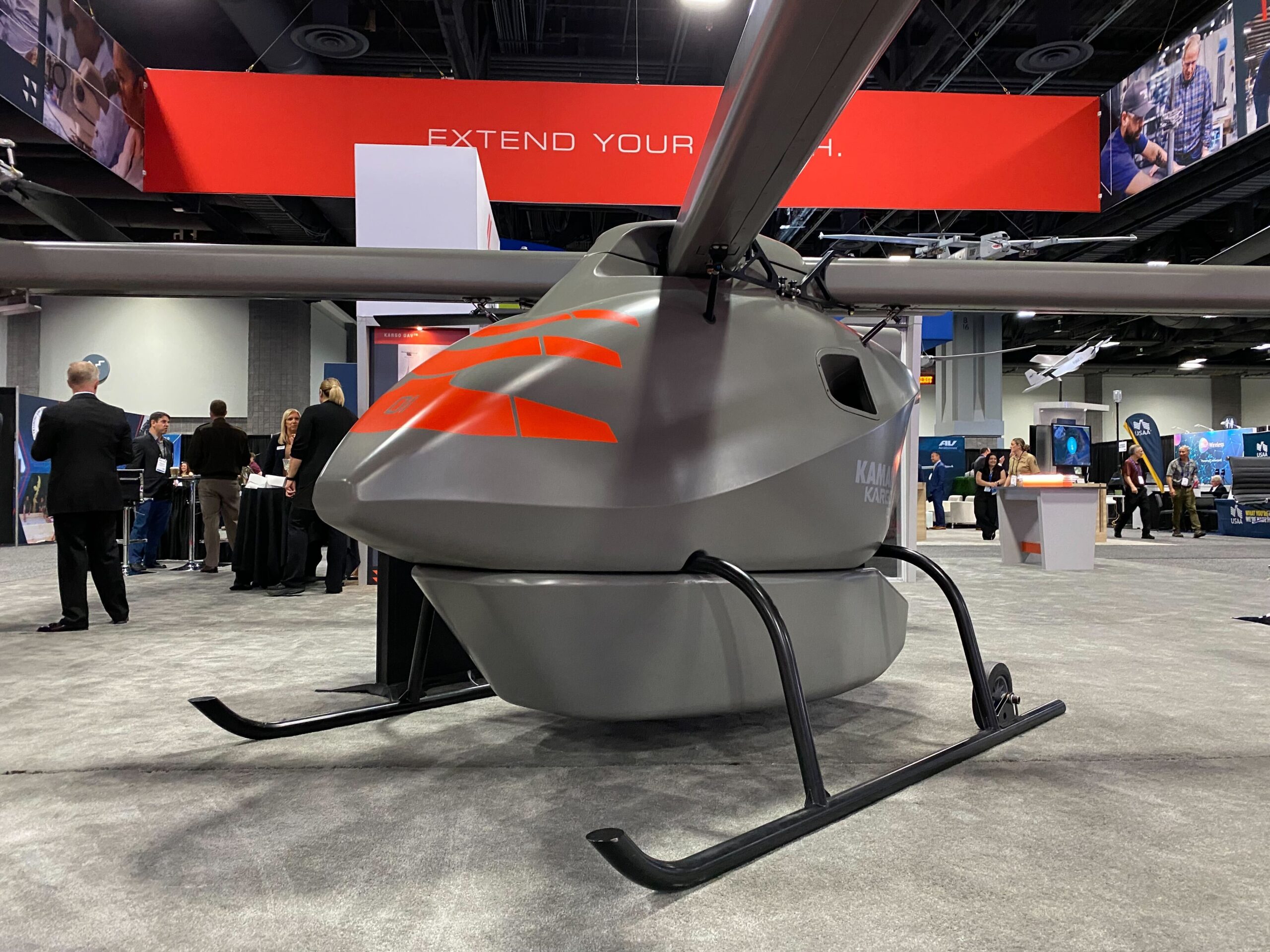
That contract called for testing of the prototype in “an operationally relevant test environment” as part of a Field User Capability Assessment.
As well as the ability to carry a payload of up to 800 pounds, some other of the Kargo UAV’s specifications have been published, including a gross weight of around 1,500 pounds, and a footprint on the ground of approximately 24 square feet from the rotor tips. For stowage, the drone can be folded up to fit inside a 20-foot container, together with ancillary equipment.
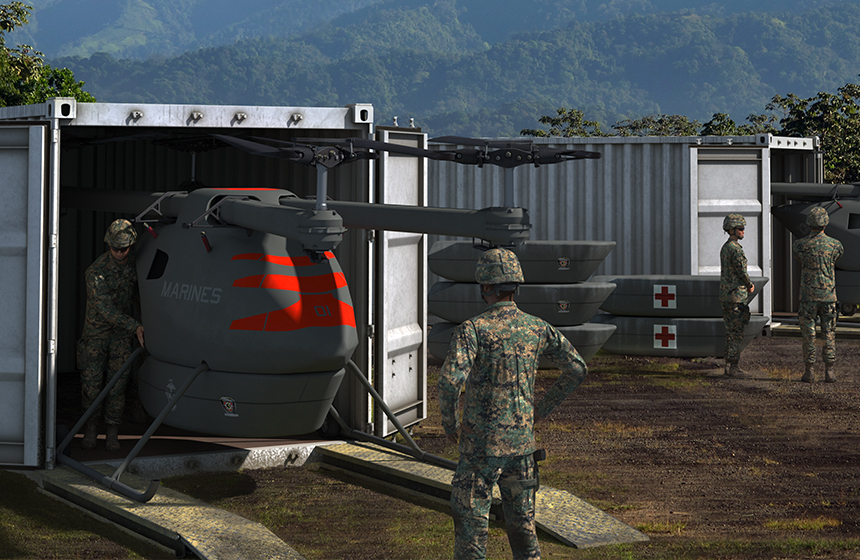
Although a multi-copter, the drone does not use the more familiar distributed electrical propulsion system. Instead, it’s powered by a Rolls-Royce RR300 turbine engine that drives four teetering, two-bladed rotors, via a mechanical transmission.
The Kargo UAV is now planned to take part in a MARV-EL fly-off in July this year, which will lead to a decision on the Marines’ next autonomous resupply vehicle. MARV-EL is being run by NAVAIR PMA-263, the Navy and Marine Corps Small Tactical Unmanned Aircraft Systems office.
The other competitor for MARV-EL, at least that we know of, is the SeaOnyx from Leidos. In April 2023 it was announced that Leidos had won a U.S Marine Corps contract to develop a prototype of this autonomous resupply vehicle under the MULS-A program. The single prototype was to be developed, delivered and demonstrated under an 18-month contract.

Among the requirements for the MULS-A prototype from Leidos were the ability to carry a logistics payload of 300-600 pounds within a radius of 25 to 100 nautical miles to a combat area.
MARV-EL reflects the Marines’ growing focus on expeditionary warfare in contested environments, in the Pacific theater especially.
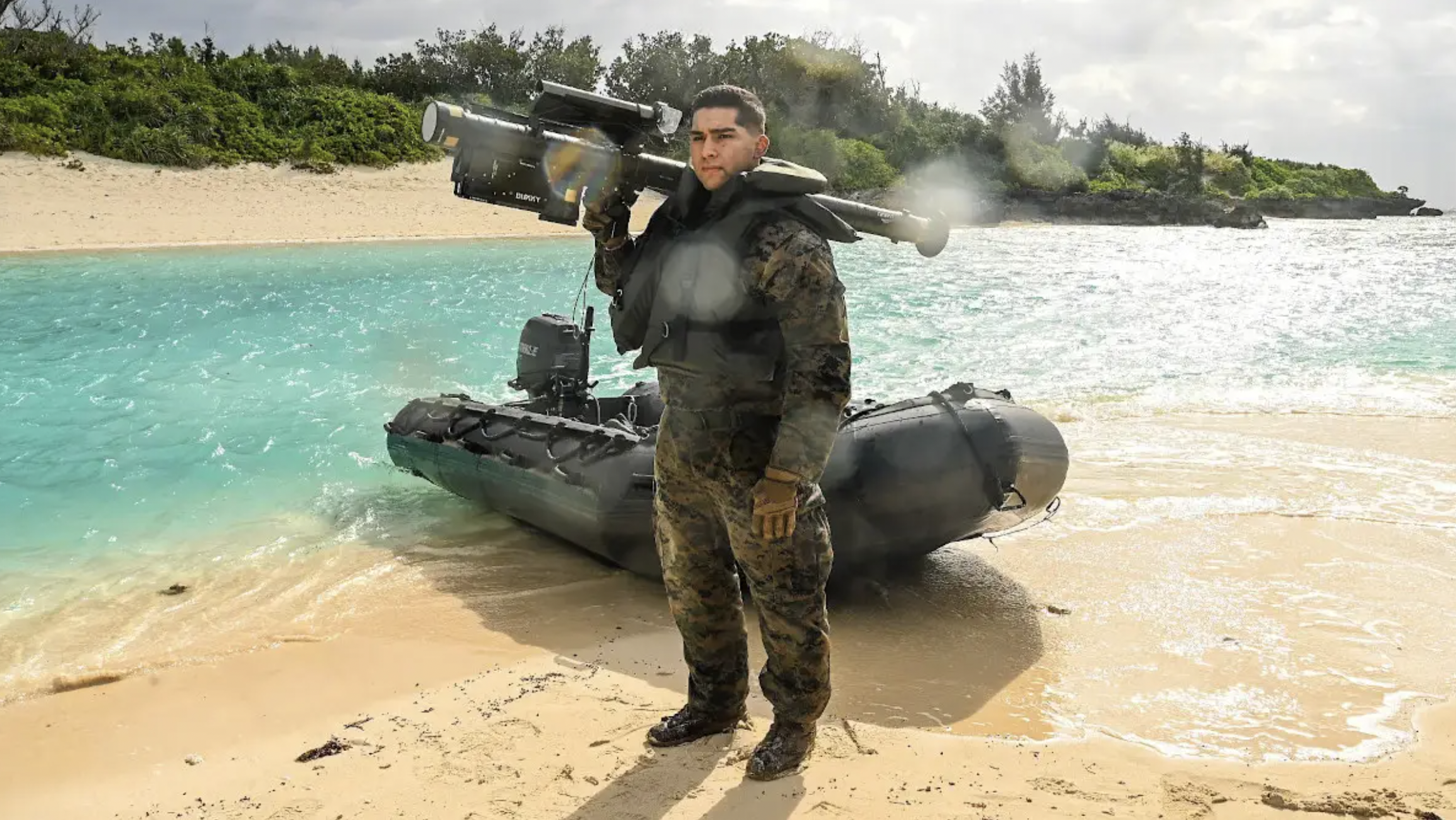
The program aims to field a medium-weight autonomous logistics platform that can deliver critical supplies to Marines, in particular when conventional ground or crewed aviation assets may not be able to support them. As well as the threat from hostile forces, these other kinds of assets may also be unavailable due to the nature of the terrain, weather, or the fact that they are needed for other missions.
This thinking also extends to the Kargo UAV’s ability to self-deploy over long distances. Without a payload it has a range of 500 nautical miles, meaning it can be flown to an operating location without tying up other assets — like Marine KC-130Js — that would likely be needed elsewhere.
As for the level of autonomy included in the Kargo UAV, Kaman describes the vision of having “a Marine or soldier pull [the drone] out of the box in the field and just tell it what to do, not operate it.” After being loaded with its cargo, the drone will then fly autonomously to where it’s needed, but if the area is too contested, it can go to a predetermined holding location, before delivering the payload later. The drone’s payloads could include, but wouldn’t be limited to fuel, ammunition, spare parts, and other critical items.
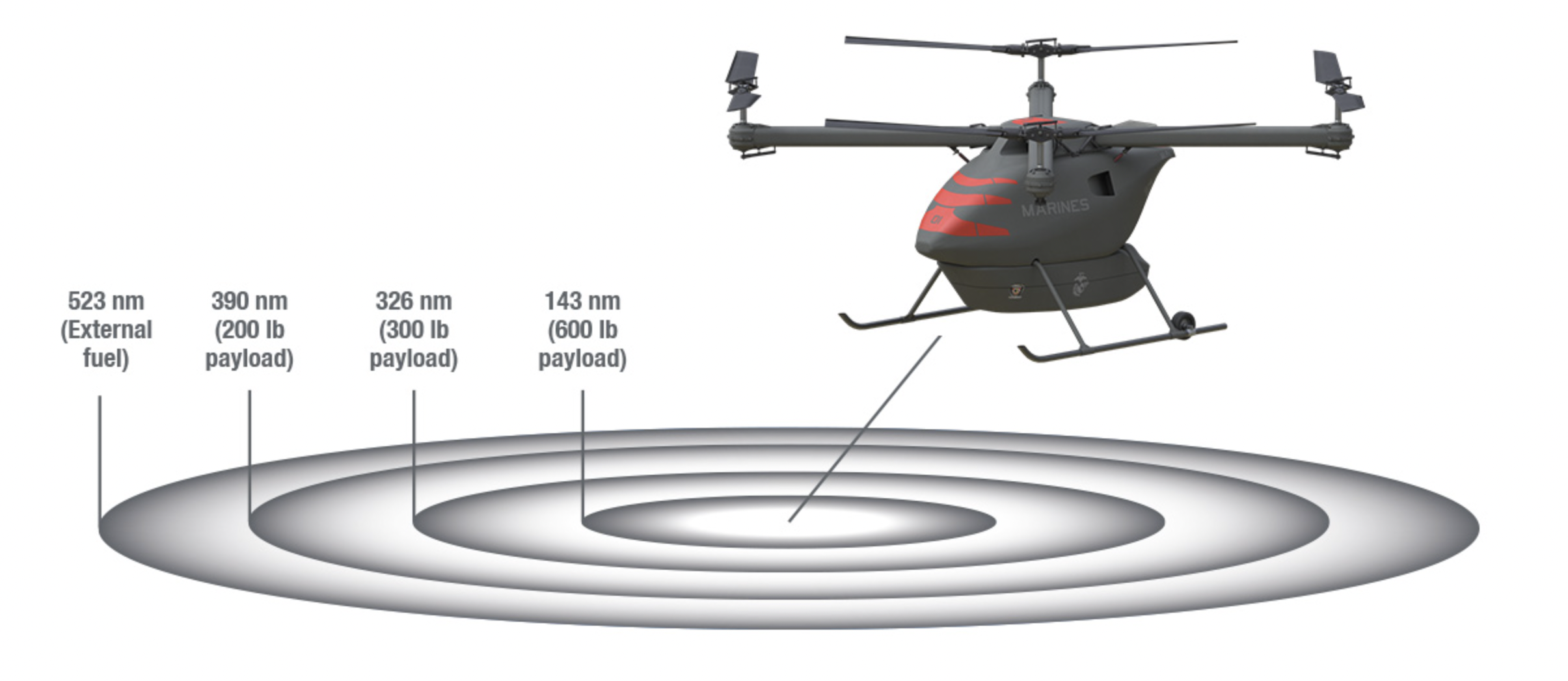
In the past, Kaman has described the autonomy system as “enabling soldiers to focus on their primary mission rather than on controlling the UAS,” with features including navigation, obstacle detection, and manual override systems.
Ultimately, whichever design is chosen for the MARV-EL requirement, the Marines can look forward to a new medium-weight logistics platform that slots in between the smaller drones and larger crewed aircraft used now. At the same time, it will ensure that more of the crews that fly those fixed-wing aircraft and helicopters are kept out of harm’s way.

Beyond conveying cargoes in combat environments, Kaman is also eyeing other potential missions for the Kargo UAV, or other drones derived from it. With a modular design concept, the company has already suggested that it could be adapted for missions including intelligence, surveillance, and reconnaissance (ISR), electronic warfare (EW), communications relay, and search and rescue. All of these are growth areas for the Marines specifically and the U.S. military more generally.
First, however, Kaman needs to successfully compete in the MARV-EL fly-off, a competition that we will watch with interest as the Marines embark on their next chapter of uncrewed air operations.
Contact the author: thomas@thewarzone.com
